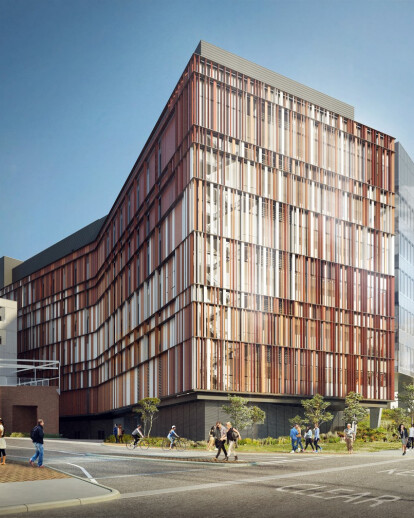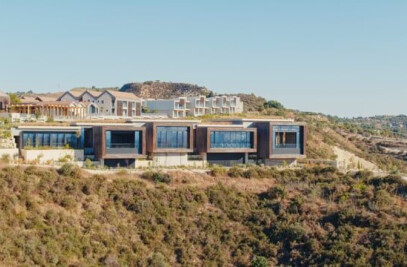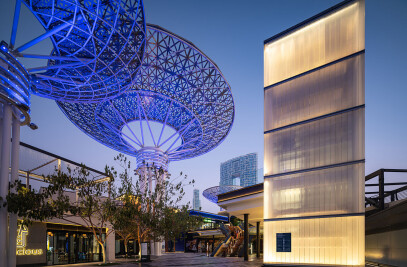Woods Bagot has designed the new Biological Sciences building at the University of New South Wales (UNSW Australia), delivering world-class facilities for UNSW researchers undertaking biomedical and environmental research. The redevelopment of the precinct has supported the university’s goal of becoming a leading research intensive institution, delivering a world-class teaching, learning and research environment for the future. Sitting within the UNSW’s Kensington Campus in the upper campus area known as the Biomedical Precinct, the 21,000m² building will house eight floors of new research and teaching laboratories, and create a new northern gateway for the precinct. Woods Bagot explored a series of iterative design responses that aimed to break down the scale and volume of the precinct into three distinct elements: the laboratory box; the workplace box; and the atrium. Woods Bagot Director and Global Health and Science sector leader Georgia Singleton said the significance of the work carried out within the walls of the building provided the conceptual inspiration for the façade design. “The building’s external, predominantly solid facade provides a protective layer akin to an animal’s skin, linking to the building’s purpose as a research space for the natural environment.” Featuring a series of external shroud-like elements that adapt and change as the facade wraps the building, the design has produced an organic aesthetic that is distinctive to the Biomedical Precinct. Inspired by the natural environment, the design references the movements of a butterfly.
“Deliberate patterning along the façade imitates the Monarch butterfly flapping its wings as it travels across the surface, leaving behind a trail of bright terracotta blades.” Singleton added. The macro view of the butterfly’s flight path is paralleled to the micro view of its wings, where a subtle gradation of colour moves from light to dark. This transition led to a variation in the density and rotation of the blades accentuating a wave of movement that sweeps across the protective outer layer or skin of the building. Colours inspired by Australian rock landscapes add further depth and dynamic expression to the façade, while the use of terracotta references the architectural heritage already present within the university grounds. Internally, flexibility and adaptability were key design goals achieved as a result of the rigor of building planning and the distribution of infrastructure. Woods Bagot Director of Laboratory Design Leslie Ashor said adhering to the idea of ‘science on display’ was an important concept throughout the design phase. “The design integrates current trends of transparency, featuring open and collaborative work spaces adjacent to specialist support zones including dedicated write-up space,” said Leslie. “To allow the laboratories to evolve over the life of the building, mobile lab benching systems were employed to enable reconfiguration with minimal effort, cost and user disruption”. The building aims to promote collaboration and interdisciplinary teamwork through centralised and shared services, enhancing the campus experience via clear way-finding and an activated ground floor plane. Upon completion, the building will have capacity for more than 550 staff and PhD students and 360 undergraduate biomedical students. The project is currently under construction and is expected to be completed mid-2017.
































